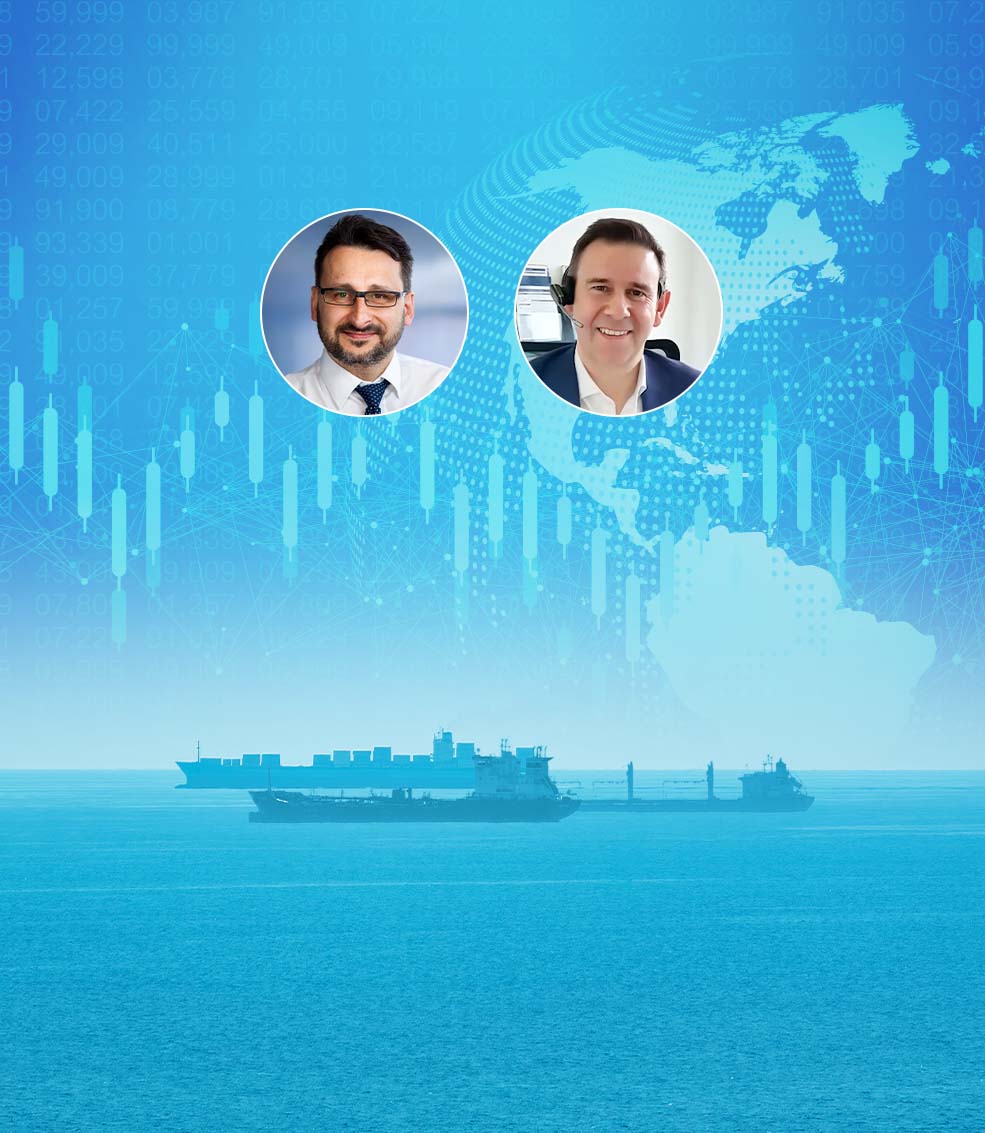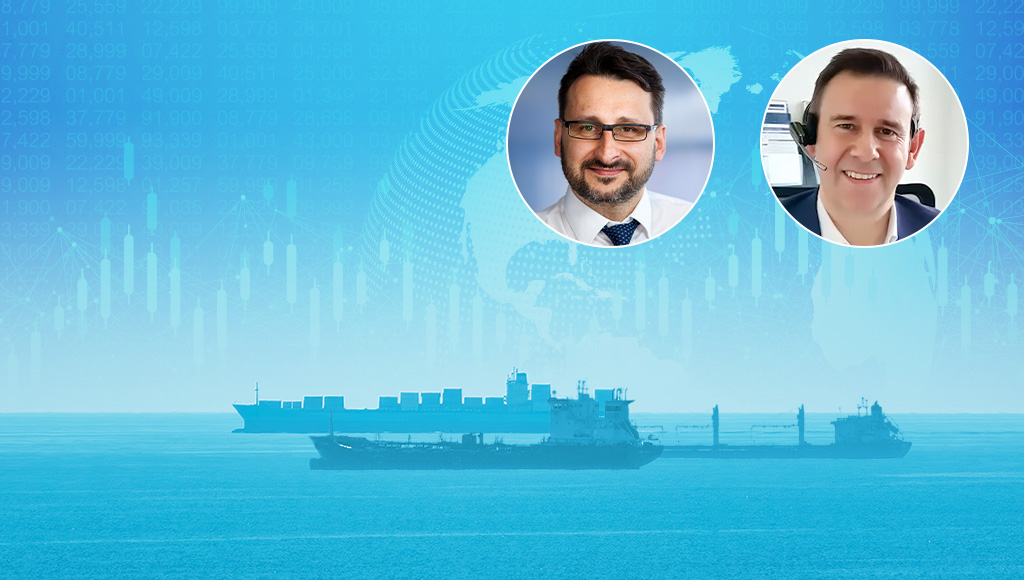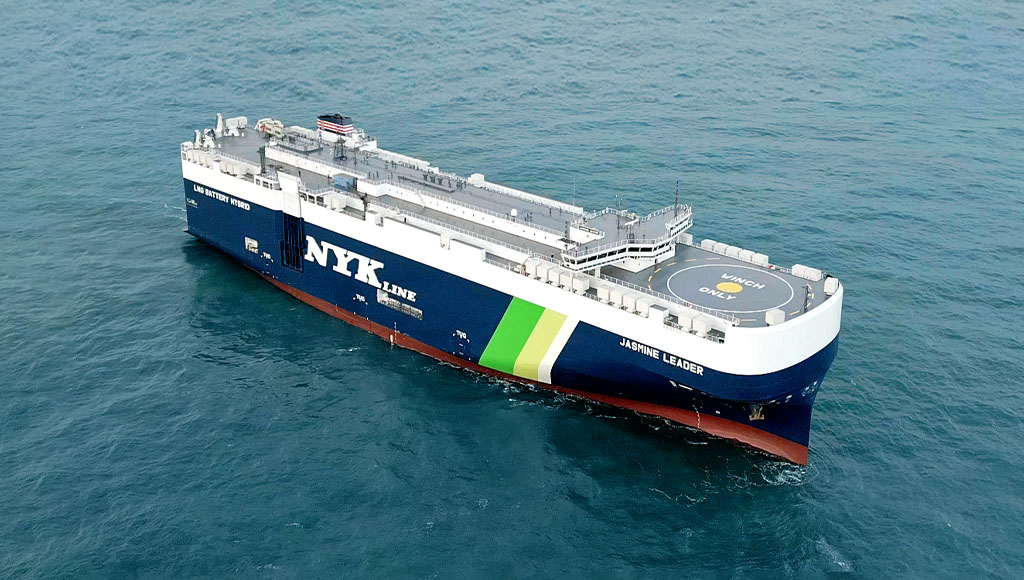168极速赛车开奖官网直播
Reporting relevant ESG data to stakeholders is a time-consuming and challenging task for many shipping companies these days. How do you show your stakeholders that you have control of your ESG risks, and how do you find the right KPIs and provide trustworthy data? Learn about effective ESG reporting in our interview.
Featuring in this interview

Carl Erik Høy-Petersen, Business Development Leader
Carl Erik Høy-Petersen is a business development leader and responsible for the ESG and sustainability service line in DNV Maritime. Since he joined DNV in 2006, he has worked with advanced decision support, project management and quantitative and qualitative risk management for clients in the maritime, finance, energy, oil and gas, and public sectors. He has worked across the value chain perspective combining technology, operation, business and finance. He is applying this perspective in his responsibilities for ESG and sustainable finance services in DNV Maritime.

Why should ship operators bring ESG to life in their companies?

ESG is not only about compliance. It is very much about creating trust in your stakeholders. As shipping companies, we are an important part of the value chain for our stakeholders. Particularly for cargo owners and charters. They need our help to reach their ESG targets, and they need us to control and report on our ESG performance. In addition, regulators, banks, insurers and investors are focusing more and more on managing ESG risks, forcing the maritime industry to show that we have control of our ESG risk exposure.

What are the biggest ESG risks and are there also opportunities?

Understanding how your company will be impacted by stakeholder expectations and future regulation is essential to manage ESG risks. The increasingly stricter environmental regulations constitute a major risk for shipping stakeholders. Building a robust and trustworthy energy efficiency and decarbonization pathway is essential to reduce risk related to CO2 tax and rising fuel costs. Other environmental aspects like underwater noise may lead to regional operational restrictions in the future. Increasing technical complexity, new regulation and new fuels all increase operational risk. Operational resilience is closely linked to crew competence and well-being. Increases in crew training, and health and safety are essential in managing this risk. The important role of the crew is also highlighted in the DNV report on behalf of the UN Global Compact – ‘Insights into seafarer training and skills needed to support a decarbonized shipping industry’. Stakeholders are increasing their scrutiny on the shipping value chain, e.g. with respect to ethical business practice. This exposes the company to new risks. Supplier and value-chain due diligence is key to managing this risk. All ESG risks can be turned into opportunities. In some regions, there is a surge in climate litigation, targeting companies accused of greenwashing or not mitigating their climate impact. Having a robust ESG strategy and executing it is essential.

What would a typical ESG process look like for a maritime company?

The key is to take ownership of the ESG process and understand your company’s ESG risk exposure. There is currently no global standard for ESG reporting. However, some standards are established as the basis for ESG reporting in shipping. SASB (Sustainability Accounting Standards Board), for example, highlights material topics specifically for shipping. However, we have seen that SASB does not fully meet the expectations from shipping stakeholders. Dialogues with stakeholders and an ESG materiality assessment help to fully develop that understanding. The focus questions to be elaborated are: What is important for your company and why? Once you know this, you can identify what is already managed in your existing processes and corporate culture and what adjustments or additional measures you need to establish. Then existing processes need to be mapped into the ESG context and determine what KPIs are relevant to show to the important ESG stakeholders.

When starting with ESG, does it need to be from scratch or do standards already exist that vessels need to comply with and can refer to?

Shipping is a heavily regulated industry. We have DCS and MRV reporting, we have SEEMP III plans, we have BWMC, MLC, safety management procedures and many more. This is an advantage when it comes to managing ESG risks. We are already working on or have implemented processes and KPIs within several ESG-related aspects. The challenge is to link existing processes, performance and KPIs into an ESG context that shows how the processes help to manage identified ESG risk exposures. In many cases, this may require some adjustments to existing processes and procedures, but you do not need to start from scratch. DNV can support to make the adjustments as efficient as possible. IMO compliance regulations like BWMC, DCS/MRV, SEEMP III and CII contribute to the E, but also think of what actions already contribute to the social aspect (S) and how to best monitor them (G).

Where do I get my data from and who can support? Do I need to have all the data in place for the first ESG reporting?

Through our dialogue with shipowners, we learned that data collection stands out as a common pain point. The necessary data is typically collected through one or many manual steps, creating an additional burden for crew and shore personnel. This also increases the risk of data errors. DNV supports customers to find efficient solutions and already delivered ESG dashboard solutions for large fleets of vessels, automating the process of gathering and visualizing ESG performance indicators. If you identify an area where no data is available, you can map out how you plan to improve and gradually implement this. I believe that standardization of data is an essential ingredient in ESG reporting. Standardization increases efficiency and accuracy within the entire data value chain, e.g. through ISO 19847/48 and operational vessel data.

What role does data trust play in ESG reporting and how can I prove trusted data?

ESG performance data is becoming part of the financial and commercial processes in shipping. This puts additional requirements on the accuracy and trust in the data. Going forward, errors in the reported data can have negative financial and commercial implications. Data trust is important and verification of the most important ESG KPIs is becoming increasingly important. We see that more cargo owners and charterers require third-party verification, e.g. of voyage emissions for their cargo as this goes into their greenhouse gas reporting on Scope 3 emissions.

Can I also use the data for other reporting?

To avoid overburdening crew and shore personnel, data should be collected once and used multiple times for various stakeholders. The most obvious example is greenhouse gas emissions from vessels. Collecting and verifying vessel emission data on a daily basis creates the foundation for multiple stakeholder reporting including: Cargo owners: Sea Cargo Charter; contract performance (ref new BIMCO ETS and CII clause) - IMO DCS/CII performance - EU ETS and MRV plus other MRV reporting schemes (e.g. UK MRV) - Poseidon for insurance and bank stakeholders. However, in the coming years, sustainability reporting regulations like the EU’s Corporate Sustainability Reporting Directive (CSRD) will require more structured sustainability reporting. The upcoming SEEMP III requirements also show how you are managing decarbonization risks. By putting a little extra effort into elaborating the energy efficiency management plan, preferably also looking beyond the required three years ahead, you will build trust in stakeholders such as cargo owners, shareholders, investors and banks. They want to understand how the company is prepared for the future. This can be a competitive advantage going forward.

How can a continuous and smooth ESG process be implemented within a company?

Through the materiality assessment, you will identify what is most important for you as a company. Your pathway then starts by addressing the most important findings first and gradually improving your reporting. If you don’t take ownership of your ESG reporting, you may find yourself forced to spend a lot of time and money on collecting and correcting data that turns out to be irrelevant for shipping. Working with experienced partners to gradually implement, improve and streamline the data collection process saves time and, ultimately, also money. In this process, digitalization will be an essential source of support. ESG is about people, operational processes and technology. You can have very good assets, but if they are not operated properly, they may still perform badly. In shipping, DNV has worked with safety and safety culture for many years, which forms a key part for the social element but also includes the environment and governance perspective. We are working closely with many shipping stakeholders, vessel owners, operators, cargo owners, banks and insurers on ESG-related topics to help shipping companies and their stakeholders bring ESG to life.







